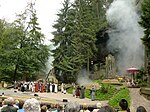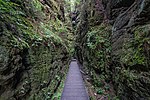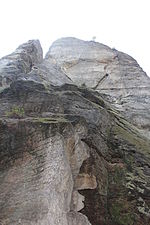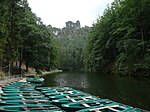Bastei
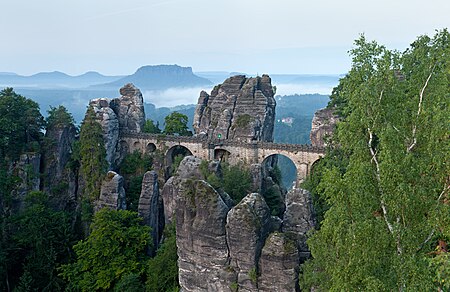
The Bastei is a rock formation rising 194 metres (636 ft) above the Elbe River in the Elbe Sandstone Mountains of Germany. Reaching a height of 305 metres (1,001 ft) above sea level, the jagged rocks of the Bastei were formed by water erosion over one million years ago. They are situated near Rathen, not far from Pirna southeast of the city of Dresden, and are the major landmark of the Saxon Switzerland National Park. They are also part of a climbing and hiking area that extends over the borders into the Bohemian Switzerland (Czech Republic). The Bastei has been a tourist attraction for over 200 years. In 1824, a wooden bridge was constructed to link several rocks for the visitors. This bridge was replaced in 1851 by the present Bastei Bridge made of sandstone. The rock formations and vistas have inspired numerous artists, among them Caspar David Friedrich ("Felsenschlucht") The spa town of Rathen is the main base for visiting the Bastei; the town can be reached from Dresden by paddle steamer on the river Elbe.
Excerpt from the Wikipedia article Bastei (License: CC BY-SA 3.0, Authors, Images).Bastei
Rahmhanke, Lohmen/Stadt Wehlen
Geographical coordinates (GPS) Address Nearby Places Show on map
Geographical coordinates (GPS)
| Latitude | Longitude |
|---|---|
| N 50.962222222222 ° | E 14.071388888889 ° |
Address
Rahmhanke
01847 Lohmen/Stadt Wehlen
Saxony, Germany
Open on Google Maps

